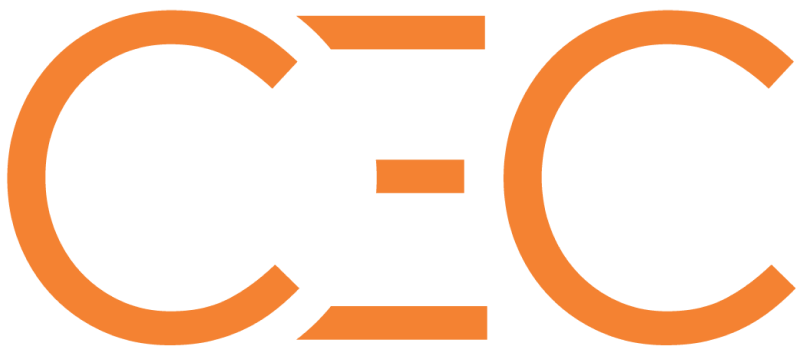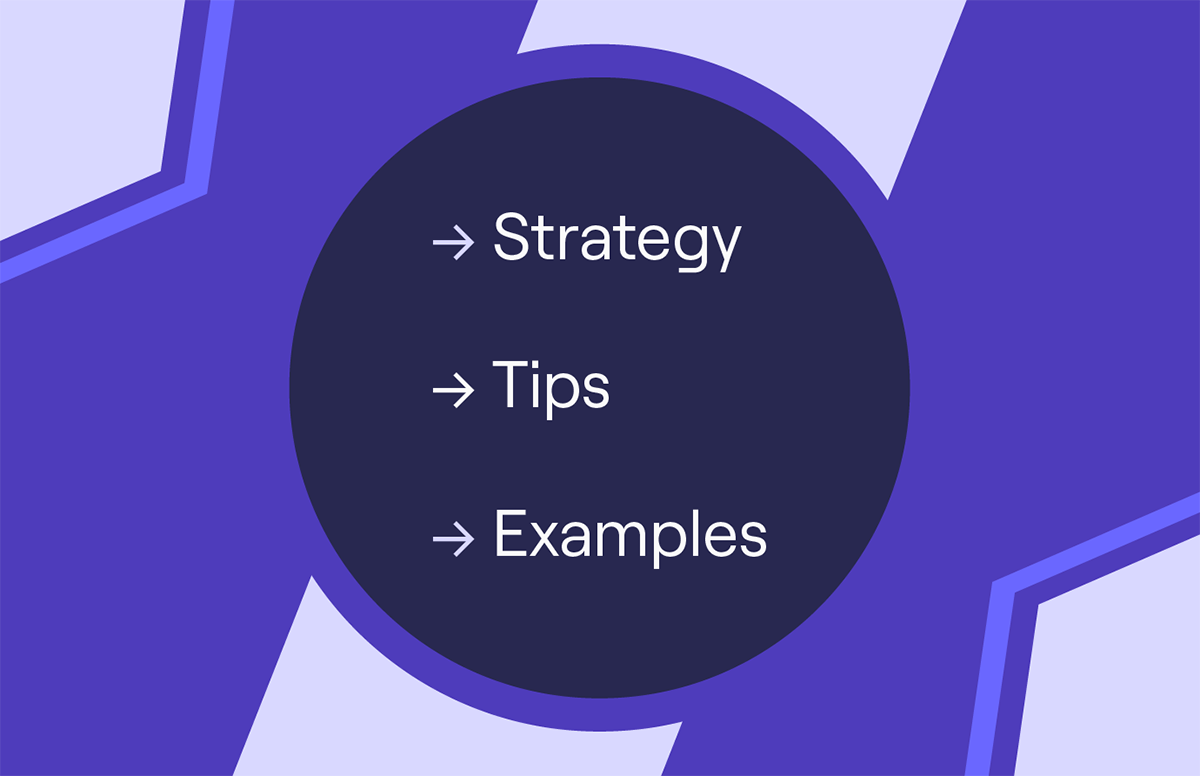What is B2B Email Marketing? Tips and Examples for 2025
Email marketing FAQs:
Interested in more marketing insights? Check out our Content Hub.👇
Is it a bird? Is it a plane? No, it’s B2B email marketing!
This unsung hero of any good sales strategy has the power to make a real difference to any business’s revenue. We’re not talking about spam here; we’re talking about carefully curated email content that not only adds value but becomes an eagerly anticipated arrival in your prospect’s inbox.
Let’s dive into how email marketing can help increase your numbers 👇
What is B2B email marketing?
B2B email marketing is a powerful and effective way to reach potential customers in the business-to-business (B2B) sector. It allows companies to directly connect with their target audiences, build brand awareness, and ultimately increase sales.
The key to successful email marketing in B2B starts with understanding the needs of your target demographic and crafting emails that offer relevant content they’ll find valuable.
You must tailor your B2B email campaigns according to the needs of each specific company. By doing this, you can ensure that your message resonates with a particular audience and drives your desired action.
To make sure that your B2B emails will be successful, it helps to have a good understanding of why email marketing is important and what makes an effective email campaign.
What are the benefits of email marketing?
You might be wondering why, in a world of social media, chatbots, and influencers, you should care about business to business email marketing.
Well, there’s a reason why 59% of marketers use it - it has a return on investment of up to 4400%. If that’s not enough, consider it one of the most direct ways to reach prospective customers.
Not to mention, it’s less intrusive and very cost-effective. It’s a reliable part of a B2B marketing strategy that quietly works behind the scenes to boost your sales.
Here are a few reasons why B2B emails should be part of your sales and marketing strategies:
It’s a direct connection
Email marketing for B2B allows you to send a message directly to a prospect. There’s no having to shout from the figurative rooftops or shoot laser beams from your eyes to get attention. Your offering arrives in an inbox, ready to help solve someone’s business problem.
It builds a relationship
In the context of B2B, one of the things that you want to build the most of is trust. It takes a while to earn and can be lost in an instant.
So, it’s worthwhile to focus on anything that helps to improve your trustworthiness. B2B marketing emails do this because, if done correctly, it feels more personal and genuine.
It’s cost-effective
This is where the ROI bit comes in again. Email marketing is one of the most cost-effective channels you can use in your marketing.
With the right B2B contact database, you can reach many leads without making a massive dent in your budget.
For example, StoreForce saw ROI from using Cognism’s B2B contact base. The company also:
- Gained a 41% positive email reply rate.
- Booked approximately 25% of trade show meetings with Cognism-generated email addresses.
“Cognism makes a traditionally difficult job a lot easier. It’s mind-boggling how I used to prospect without it.”
“The tool has paid for itself as we’ve closed opportunities generated from Cognism’s email data.”
“Many vendors promise ROI and don’t deliver. With Cognism, we’ve seen ROI, and not everyone can say that. Cognism does what it promises, so I’m a huge advocate. It actually works.”
It boosts sales
Your leads are much more likely to turn into sales when you can tailor your messages to specific segments of your audience. By delivering content and offerings that meet their needs and interests, you increase the likelihood of them purchasing, signing up for a service, or requesting more information.
It provides data
You don’t need X-ray vision to determine what your prospects are doing, not when you have B2B data at your fingertips.
- You can significantly improve your decision-making with the data you collect from your email campaigns.
- You can see who opens them, what they click on, and what they delete faster than any superhuman speedster.
- You can then use these insights to tweak and optimise your approach.
6 B2B email marketing strategies that work
It’s pretty clear that B2B email has value, but what are the things you should take into consideration when formulating your grand plan?
Keep reading to discover the six types of email marketing strategies that’ll help flex your marketing muscles:
1. Segmentation
Just like there are superheroes with different kinds of powers, your customers can vary greatly.
Sending a generic email to everyone is a wasted click of a send button. You should segment your email list based on interests, needs, behaviours, industry, location, previous interactions, etc.
Segmented lists are an excellent tactic for effective B2B email marketing. It will help make your emails more relevant and improve the chances of prospects reading your messages.
💡You might be interested in learning how to ungate your content by segment.
2. Content
If someone’s going to open something that’s landed in their inbox, it better be worth their time.
Make sure your emails are helpful. Share some insights or provide a solution to a problem they could be facing in their industry (a problem you just happen to be an expert in).
Another thing to consider is making your content more unique and memorable.
Don’t be afraid to think outside the box and experiment with your ideas; you have the luxury of looking at the marketing data to see if it works.
3. Timing
Like any good epic story, saving the day means arriving at the right time. Don’t ignore this aspect when planning when to send your B2B marketing emails. Think about time zones, work schedules, and days of the week.
Earlier in the week and the mornings work well for B2B email marketing, but you should experiment to see what works best for your customers.
If you’ve found a sweet spot, consider making your emails a recurring series through drip email marketing, such as “Tuesday Tips” or the like.
4. Personalisation
Secret identities work well for masked crime fighters but not so much for your B2B email marketing lists. And if your lists aren’t up to date, personalisation just won’t work.
This is another aspect of sales email marketing where a data vendor is involved. CEC Marketing chose Cognism, which led to a 35-45% increase in sign-ups for our marketing campaigns.
They said:

Global Director of Data @CEC Marketing

Now that you have accurate email marketing lists, you can focus on discovery.
The more you know about your prospects, the more personal you can make your emails. Personalise your emails by using the receiver’s name, company name, or something about their location to make them feel more genuine.
Depending on the level of research and segmentation you can achieve, you can also improve the personalisation by talking about specific pain or interest points they may have searched for online.
5. Automation
With email marketing automation, you can set up workflows to deliver tailored emails to the right customer segments at the right time. Moreover, you can create and schedule campaigns, manage contact lists and track performance.
Whether scheduling sequences or sending bulk emails, using a B2B email marketing platform can streamline and simplify your entire email marketing process.
It can also power ABM campaigns by automating emails when a prospect takes certain actions or visits certain pages on your website. These marketing triggers are an integral part of any email marketing strategy.
6. Analytics
This will help you gain invaluable insights into the performance of your campaigns.
By measuring key marketing metrics like open, click-through, and conversion rates, you’ll get a better understanding of what is working and what isn’t in your email campaigns.
Then, you can make more informed decisions and adjust your future campaigns.
For example, if you notice that certain types of subject lines or emails have higher open rates, then you can tailor your future campaigns around those results and improve your click-through rates going forward.
Analytics are also great for tracking the success of automated campaigns. You can see how many people responded to an automation sequence and make necessary changes to optimise it for better performance.
Additionally, analytics can help you spot trends in customer behaviour and even glean insights into customer preferences, thereby enhancing your email marketing strategies and tactics.
🎥 Learn more about using B2B email marketing for growth revenue in this informative video. Click to watch!
B2B email marketing tips to increase response rates
Here they come to save the day! Let’s look at some best practices for your emailers that are sure to encourage more responses from your email subscribers.
1. Subject lines
This is your opening gambit, so you better make it compelling.
Your email subject line needs to entice, inform, and, better yet, have a hook. Think of it like a billboard headline; it should grab attention and make the reader want to know more.
A good approach is to bring up a common pain point for your industry and imply a solution.
2. Conciseness
If your business email looks like it’ll be hard work to read, you’ll lose your prospect’s attention faster than Kryptonite drains Superman.
Don’t make your mail too long. Break up the copy into shorter paragraphs; use sub-headings if you have several points to make.
Keep your emails to the point and avoid irrelevant content that could reduce engagement. Your email should be concise and actionable, so ensure the main call-to-action is clear. Don’t include too many links or images.
You can also use humour or storytelling to engage your audience naturally and keep their attention.
3. Call to action
There’s no point in hooking your prospect with a great subject line, engaging them with helpful content, and then…nothing.
You need to include a call to action. Make it easy for your reader to know what to do next with something like “Schedule a demo” or “Request a quote”.
The call to action should be obvious, so make sure it stands out and is easily understood. If you’re asking a recipient to do something, be clear and concise about what you want them to do and why they should do it.
Additionally, don’t forget to include a link for further information or to take the desired action. Your readers won’t click on an unknown link, so ensure the anchor text is relevant and descriptive of what they’ll find when they click.
A call to action won’t guarantee a sale, but it improves the chances of your prospect taking action.
4. Design
You want your B2B marketing emails to look professional and be visually appealing. It’s good to keep the design uncluttered and incorporate some elements from your brand so it’s recognisable as coming from you.
Ensure your design is responsive so it looks great on both desktop and mobile; most people nowadays check their emails on their smartphones.
Use high-quality images (sized correctly so your mail’s not too data-intensive) but not too many. Remember, you want your mail to look easy to read.
5. A/B testing
Just like any other online SaaS marketing activity, you have the luxury of being able to test your B2B email marketing strategies.
Don’t be afraid to create different email variations and use them to run A/B tests. You can try different subject lines, CTAs, images, layout, or whatever else you think might improve engagement.
6. Data privacy
As the quote from Spiderman goes, “With great power, comes great responsibility”.
Be sure to follow the data protection regulations for your location, such as the GDPR if you’re in the EU.
Good rules of thumb are:
- Be transparent about what data you’re collecting.
- Include an easy opt-out or unsubscribe option.
- Always obtain explicit consent for sending marketing emails.
Unsolicited emails can harm your email reputation, especially if spam filters frequently pick them up or there are many spam complaints from potential buyers.
Choosing a B2B data provider to help create compliant B2B data lists can improve email deliverability and prevent emails from going to spam folders.
Most of all, using a compliant data provider means you don’t risk any fines from the ICO.
The best B2B email marketing examples
There are many ways to constantly engage with your audience through their inbox. Below are just some email marketing examples you could use as part of your business strategy:
1. Welcome message
Welcome emails are sent to new subscribers or customers, introducing them to your brand and setting the tone for the relationship.
Here’s an example:
“Welcome to our family!
We are so excited you have joined us. We know that you will find great value and satisfaction in being part of our community. We strive to provide the best customer service and quality products, and we look forward to helping you reach your goals.
At [brand name], we believe in providing our customers an outstanding experience.”
2. Newsletter
Newsletters allow you to keep your customers up-to-date with the latest news and happenings from your business. They allow you to share valuable content, such as blog posts, case studies, how-to tutorials and industry insights.
This B2B email example builds trust and loyalty with your customers while providing information to help them make informed decisions.
Look at sending regular updates on industry trends, company news, and valuable content.
3. Promotions and exclusive offers
Promotional emails are a great way to entice your customers and encourage them to take advantage of an offer, sale or discount.
Here’s an example:
“Hey [name],
We’ve got something special for you! For a limited time only, we’re offering 20% off all our products. Take advantage of this offer now and enjoy huge savings on your purchase.
Head over to [url] now and enter the code [promo code] at checkout to get the discount.
Hurry, this offer ends soon!”
Try it, especially if you want to drive conversions and revenue.
4. Product announcement
Use this form of B2B email marketing when introducing new products or features. Explain how they benefit the recipient’s business.
You can say something like:
“It’s time to experience the next level of product excellence! We are excited to announce the launch of our latest product, [Product Name], a revolutionary new solution that will take your business to the next level.
What makes this product so special? Here are just a few of the features:
- [Feature 1] - Our revolutionary feature allows you to [benefit ]
- [Feature 2] - Enjoy maximum convenience with our advanced feature
- [Feature 3] - Take advantage of our powerful technology for increased efficiency.
Try it now and see the difference!”
5. Educational content
For any email marketing campaign, providing educational content can be an effective way to engage customers and potential customers.
As part of an email marketing strategy, educational content such as eBooks, webinars, or guides can provide valuable information to your target audience while positioning your brand as an industry thought leader.
When crafting educational content for an email marketing campaign, it’s essential to focus on topics that are relevant to your customers and which offer real value.
This ensures that the content benefits them, increasing the likelihood of engagement.
6. Event invitation
Promoting webinars, seminars, or conferences your company is hosting or attending.
If you’re hosting an event (virtual or in-person), such as a webinar, seminar or workshop, don’t forget to invite your customers.
Create an email that outlines the details of the event, its benefits, and how they can sign up. You could throw in incentives for registering early or offer ticket discounts.
7. Lead nurturing
Drip campaigns are a great way to nurture leads over time.
Not only do they create beneficial customer relationships, but they can increase customer loyalty, too.
For effective email nurtures, deliver relevant email marketing content and gradually guide prospects through the sales funnel.
Start by warmly introducing yourself and your product or service to the prospect. Include images, videos, or other forms of content that will help them better understand what you have to offer.
Provide helpful information such as educational articles, case studies, or interviews with industry professionals. These can help prospects move further down the sales and marketing funnel as they become more knowledgeable about your products and services.
8. Customer testimonials and case studies
Using customer testimonials and case studies in your B2B cold email marketing can be an effective way to build trust and credibility with potential customers. By showcasing real-life success stories from existing customers, you can demonstrate the results of your product or service, as well as provide social proof that it works.
The best customer stories to feature in your email campaigns are those that highlight how your product or service solved a customer’s problem. This will likely resonate with future prospects and encourage them to take action.
9. Customer survey
Customer surveys are an essential part of any successful business. They allow you to gain valuable insights into customer preferences and behaviours that enhance the customer experience and drive more sales.
The key to a successful survey is ensuring it reaches the right people. Email marketing is one of the most effective strategies for this, as it allows you to target specific audiences likely to be interested in the survey and its results.
When creating a customer survey email, be sure to include information about the purpose of the survey and how it will benefit customers. You should also give customers an incentive for completing the survey, such as a discount or free product.
10. Re-engagement
Re-engagement is an integral part of any email marketing strategy. It involves contacting inactive subscribers who haven’t engaged with your emails for some time.
Re-engagement allows you to regain their interest and bring them back into the email funnel as active members of your subscriber list.
The first step in a successful re-engagement campaign is to identify inactive subscribers. This can be done by segmenting your email list according to engagement levels. Once you’ve identified those who haven’t opened or clicked through your emails in the past 90 days, you can create a re-engagement email targeting them.
In this email for marketing strategy, it’s essential to remind subscribers of the value they’ll get from being part of your subscriber list. You could also offer them an incentive for them to re-engage. This could be in the form of a discount, free product, or special offer.
💡Still not sure how to write B2B emails? Have a look at our cold email templates.
Tips for better B2B email marketing
We’ve gone through a fair bit so far, but there are a few more practical tips that’ll give you the edge. Add some of these to your utility belt to improve your outbox-to-inbox skills:
- Before sending off an email, send it to yourself to check how it looks on desktop and mobile.
- Use a spell checker to correct typos and grammar mistakes, but still read through it carefully. If possible, get a few other pairs of eyes to give it a once over.
- Make use of double opt-in when building your email list. So when someone subscribes, they also receive an email asking them to confirm their subscription. This keeps your list clean and compliant.
- Design your emails with colours that match your branding. Choose fonts that are easy to read and are an appropriate size.
- Don’t bombard your subscribers with daily emails. A few a week should suffice. Think quality over quantity. Email lead generation software can help with scheduling.
- When it comes to content length, keep it short and sweet. Respect your audience’s time; be concise and to the point.
- Ensure that if your email sends the reader to a landing page, it aligns with the expectations created in the mail. For instance, if your email promises a free eBook, don’t lead them to a page promoting your latest software.
Email marketing: key takeaway
Like a superhero dressed up as their alter ego, email marketing for business is much more than it seems. When done right, it can work wonders for your bottom line.
It’s a cost-effective, relationship-building, and sales-boosting tool that should be a core marketing strategy. With the right strategies, best practices, and creativity, you can make your emails the stuff of legend.
And if at first you don’t succeed, keep at it. Remember, email marketing is an ongoing journey. Keep experimenting, testing, and adapting to your audience’s needs and preferences.
In the ever-evolving world of digital marketing, staying on your toes is the key to success.
So, don your cape and get ready to soar with the secret power of an email.
Secrets to building an email marketing contact list
Creating an email database is an ongoing and worthy endeavour. It’s one of the cornerstones of successful email marketing.
How do you build a B2B email marketing contact list?
Easy! You use a sales and marketing tool like Cognism, which gives you:
- Unrestricted access to person and company-level data*.
- Verified emails.
- Intent data by Bombora.
- Quality GDPR and CCPA-compliant data.
- A database checked and cleaned against global DNC lists.
*Subject to fair usage policy
Plandek is one company that has used Cognism to improve data quality and enrichment. This has resulted in a 95% email deliverability rate and a 52% increase in conversion rates!
Get started today. Click to book a call with one of our data experts 👇
/CTAs%20(SEO)/High-res%20CTA-marketing-goals-webp.webp?width=672&height=258&name=High-res%20CTA-marketing-goals-webp.webp)
/CTAs%20(SEO)/CTA-EMAIL-COGNISM-WEBP.webp?width=672&height=258&name=CTA-EMAIL-COGNISM-WEBP.webp)


